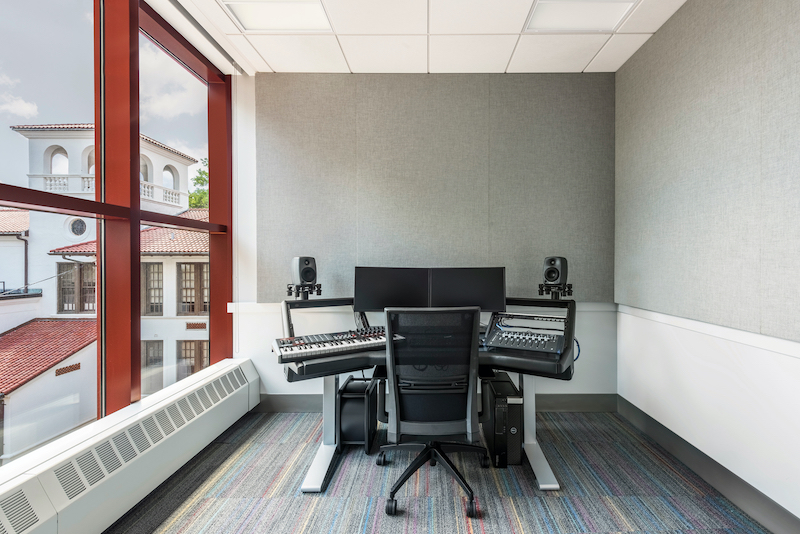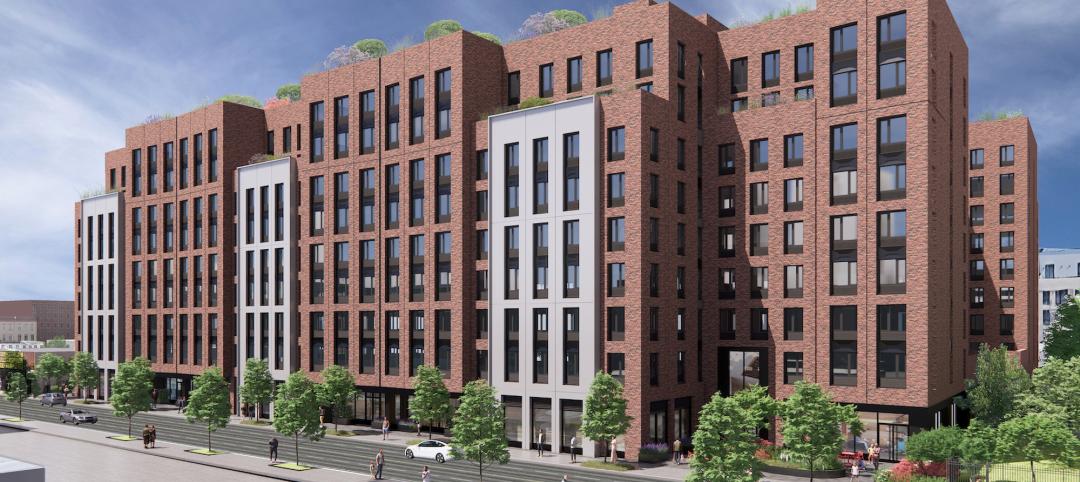Some considerations institutions have already explored include policy and operational updates such as re-directing foot traffic and implementing new signage and graphic communications. They have also augmented the physical environment to account for maintaining distancing through extensive classroom seating analysis, exploring single-room options in student housing and rethinking food service options.
The unfortunate reality is this pandemic continues to persist, and while institutions have successfully developed and deployed online models to continue educational programming, it’s clear the in-person experience is irreplaceable. The pressure is on to get students back on campus, even if it means staggering classes, reducing student capacity and incorporating virtual courses. Faculty and staff are under an incredible amount of pressure to not only deliver content to students, but to also create engaging learning environments. It’s tough to do in normal circumstances – student attention spans continue to drastically drop year-over-year – but it’s especially hard when forced to do so virtually.
It has been proven that active learning is more effective than passive models. Therefore, the simple act of recording a 60-minute lecture is not enough to successfully deliver a virtual curriculum. The education market must re-think how content is delivered and parse out information in doses, allowing for active participation in between. Both synchronous and asynchronous learning can accommodate these nuances, but faculty and staff require resources and support to adjust their teaching.
As administrations and faculty pivot for the next phase of this new normal, how can designers help institutions give faculty and staff the spaces and tools required to be successful?
Our answer: Invest in infrastructure to support faculty in their transition to virtual environments through “The Online Learning Lab” – a space which facilitates hybrid, synchronous and asynchronous learning solutions, and gives faculty the spaces, technology and instructional design resources they need.
An Online Learning Lab might look different depending on the institution, but it likely includes the following elements:
— Synchronous classroom: A synchronous classroom typically has a capacity for less than 20 students with multiple camera positions, three-point lighting, a green screen, an interactive touchscreen, audio capture throughout the classroom, and confidence monitors and screens to see/view remote learners. Courses can be run live or can be pre-recorded in this space. The goal is to create an intimate environment and leverage technology to facilitate equitable learning experiences for both those who are in-person and those who are remote. For instructors, flexible infrastructure and professional-level components also allow for experimentation in producing a wide array of quality content. A synchronous classroom may have a visual connection to an adjacent “Control Room” where support staff can coach instructors or troubleshoot AV in real-time.
— Broadcasting/recording pods: Recording pods provide one-touch video/audio recording for a single user and facilitate the ability to record and/or broadcast live. Technology includes an in-room computer or laptop connection, single point camera, a green screen, and proper sound isolation. This option is designed to be user-friendly and allows for use with minimal support. Recording pods may be particularly useful for faculty who are not comfortable interfacing with students in person due to health and safety concerns.
Recording booths found at Montclair State University’s School of Communications and Media have technology already included that can be used for broadcasting or recording by faculty.
— Collaborative and staff space: This space is for technology support staff and instructional designers to work with faculty to create a more seamless experience. The goal of these spaces is to streamline the content creation process by providing proper resources and pre-production tools in order to minimize the need for post-production activities.
Newsrooms, like the one above designed for SUNY Oswego, can be used to incorporate synchronous instruction, broadcasting and breakout spaces.
Long story short – instead of creating new spaces or facilities on campus to augment the in-person experience, we need to reallocate resources currently available on campus to improve the virtual learning environment for both content consumers and creators.
Considerations When Implementing an Online Learning Lab
When implementing an Online Learning Lab, having dedicated staff to manage the technology and features of these spaces is essential. Again, faculty are already under a massive amount of pressure to create, maintain and share online content while keeping students engaged. They need support staff to assist them and help deliver a seamless learning experience.
Current staff can serve as this support system – by re-focusing the efforts of TAs or working with instructional designers or technology staff in advance this content can be successfully captured and distributed without the need for post-production teams and dedicated studios. Launching and maintaining an Online Learning Lab needs to be a full and dedicated undertaking on the part of the institutions. It’s a re-thought, re-cast, re-imagined version of teaching and learning.
While there are idealized versions of these spaces with hefty technology investments, there are many successful examples of institutions who have retrofit existing campus spaces to serve this need at reduced costs. Repurposing small campus spaces (think about those classrooms whose social distancing capacity has been reduced to 10 people or less) is possible with strategic space planning and a moderate investment in technology. The Online Learning Lab is not a new space type in response to the pandemic, but the importance of this space as a faculty and student resource has been amplified by the pandemic. The prevalence and need for investment in this type of space will continue to be critical in the “next normal”.
More from Author
CannonDesign | Jan 3, 2024
Designing better built environments for a neurodiverse world
For most of human history, design has mostly considered “typical users” who are fully able-bodied without clinical or emotional disabilities. The problem with this approach is that it offers a limited perspective on how space can positively or negatively influence someone based on their physical, mental, and sensory abilities.
CannonDesign | Oct 23, 2023
Former munitions plant reimagined as net-zero federal workplace
The General Services Administration (GSA) has embraced adaptive reuse with Building 48, an exciting workplace project that sets new precedents for how the federal government will approach sustainable design.
CannonDesign | Aug 22, 2023
How boldly uniting divergent disciplines boosts students’ career viability
CannonDesign's Charles Smith and Patricia Bou argue that spaces designed for interdisciplinary learning will help fuel a strong, resilient generation of students in an ever-changing economy.
CannonDesign | Jul 10, 2023
The latest pediatric design solutions for our tiniest patients
Pediatric design leaders Julia Jude and Kristie Alexander share several of CannonDesign's latest pediatric projects.
CannonDesign | May 11, 2023
Let's build toward a circular economy
Eric Corey Freed, Director of Sustainability, CannonDesign, discusses the values of well-designed, regenerative buildings.
CannonDesign | Apr 10, 2023
4 ways designers can help chief heat officers reduce climate change risks
Eric Corey Freed, Director of Sustainability, CannonDesign, shares how established designers and recently-emerged chief heat officers (CHO) can collaborate on solutions for alleviating climate change risks.
CannonDesign | Mar 9, 2023
5 laboratory design choices that accelerate scientific discovery
Stephen Blair, director of CannonDesign's Science & Technology Practice, identifies five important design strategies to make the most out of our research laboratories.
CannonDesign | Feb 9, 2023
3 ways building design can elevate bold thinking and entrepreneurial cultures
Mehrdad Yazdani of CannonDesign shares how the visionary design of a University of Utah building can be applied to other building types.
CannonDesign | Jan 9, 2023
How modular solutions can help address skyrocketing construction costs
Modular builder Joshua Mensinger details three ways modular solutions aid in lowering construction costs.
CannonDesign | Dec 9, 2022
What's old is new: Why you should consider adaptive reuse
While new construction allows for incredible levels of customization, there’s no denying that new buildings can have adverse impacts on the climate, budgets, schedules and even the cultural and historic fabrics of communities.
















